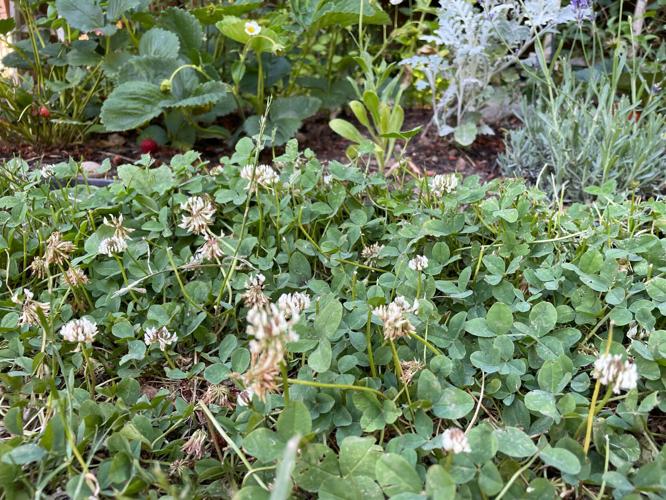Question: I live on a small piece of property in town and I do not have irrigation. Every summer my lawn turns brown because I don’t have a way of watering it besides moving sprinklers around. A friend told me I should look into eco-lawns, but I am not sure what that is or if it is a good option in our region? Would this keep my lawn looking nice throughout the summer?
Answer: Whether you have acreage in the country or a small backyard in town, we all face the heat of summer and the dreaded drought it brings along with it.
Although lush green lawns first appeared in the 17th century and have long been a sign of wealth and status, in more recent years, homeowners have been converting their precious yard space into more productive spaces like vegetable or pollinator gardens. If green space is what you are on the hunt for, but need ways to conserve water and money during the dry Oregon summers, an eco-lawn could be just the answer.
An eco-lawn is simply a drought tolerant, low maintenance mixture of grasses and/or groundcovers that require less fertilizer and less water than conventional perennial grass mixes. They can be broadleaf or grass species and each option comes with its own pros and cons.
If you are looking to create a space that resembles a traditional lawn, then perennial ryegrass, fine fescue or even clover would all make great choices. Each variety is quick to establish with proper care and works well when planted together.
More recently, however, plants such as yarrow, microclover and alyssum have gained popularity for their ability to spread, showcase flowers and create a soft place for bare feet.
Once you have chosen your variety, you will basically go about planting it the same way you would standard grass seed. Spring and fall are optimal times to plant since the weather is more temperate and the forecast generally brings more rain.
The water requirements will be much higher during the first year — especially during the heat of the summer — however, once the plants are established, watering needs will drop by about 30% of that of a conventional lawn. If left to its own devices, any of the above species should stay fairly green throughout the summer and will only need to be mowed at about two to three week intervals — or not at all. A win-win in my book!
Although it would be easy to argue that the good outweighs the bad, there are some potential downsides to each seed choice. While yarrow will stay green and flower in the heat, it can also be quite invasive and spread into flower beds or walkways fairly quickly.
Perennial ryegrass and fine fescue work together to create the classic lawn look, but with less water they can go dormant in extreme temperatures, causing them to turn brown. They will, however, stay green throughout the winter.
Clover creates a carpet-like effect that is great for walking on with bare feet, but it is also known for attracting bees which could be seen as a negative.
Whether you are looking to save money, save water or even just save time this summer working on your yard, adding an eco-lawn could be a wonderful addition to any property.
Originally published in the News Review 6/28/2024

